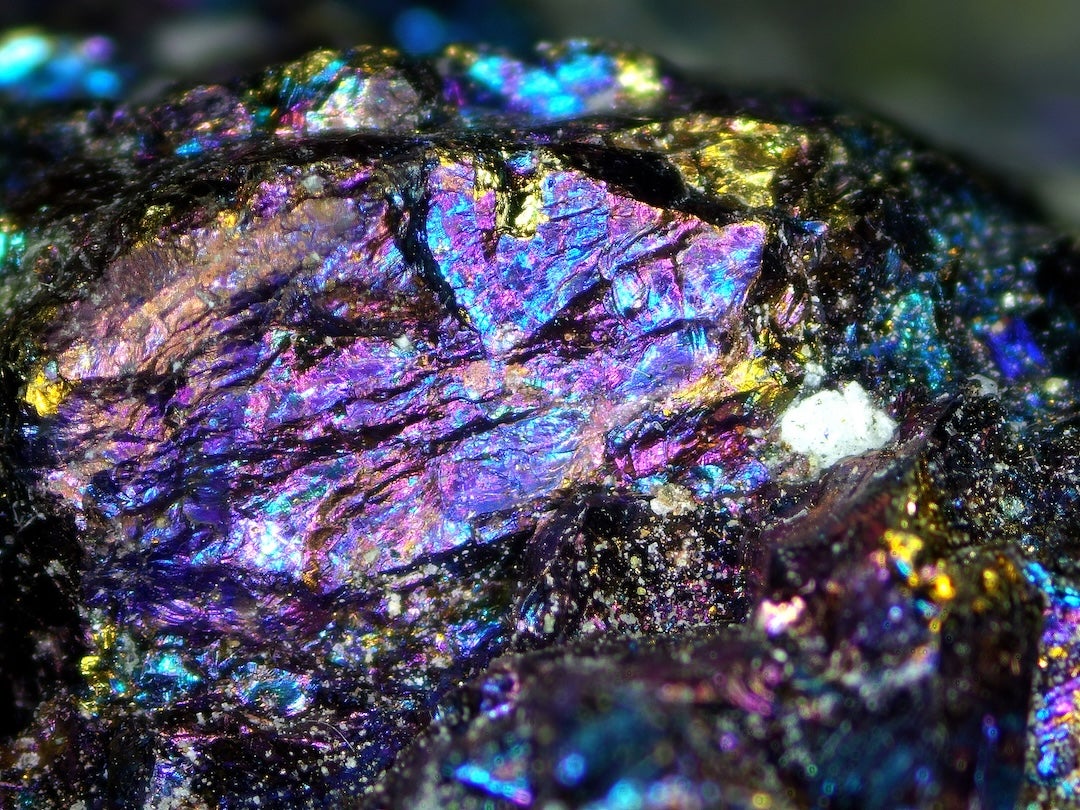
Identifying a mineral might sound straightforward: analyze its chemistry, compare it to known minerals and voilà. But for geologists, this process can be a time-consuming puzzle requiring specialized expertise and a lot of manual calculation.
Now, a team of researchers at Rice University’s Department of Earth, Environmental and Planetary Sciences has developed MIST — Mineral Identification by Stoichiometry — the first online tool capable of automatically identifying hundreds of different mineral species from their chemical composition using a carefully designed rules-based algorithm.
The best part? It’s free for anyone to use.
“MIST takes a tedious, expertise-heavy process and makes it accessible in seconds,” said Kirsten Siebach, assistant professor of Earth, environmental and planetary sciences and lead author of the study recently published in Computers and Geosciences. “You don’t have to already know what mineral you’re looking at — MIST can figure it out from the chemistry.”
In fact, Siebach said the idea for MIST came from the anticipation of receiving blind scan data from Mars ripe with possibilities of unexpected minerals.
“We didn’t want to only look for minerals we expected,” Siebach said. “We wanted to be able to quickly recognize minerals whether we anticipated them or not.”
Mineral identification matters far beyond the lab. The chemical makeup of minerals holds clues about the geologic conditions that formed them, from the depths of Earth’s mantle to the surface of Mars. Traditionally, researchers using techniques like electron probe microanalysis had to normalize chemical data, calculate “atoms per formula unit” and compare element ratios to hundreds of possible minerals — a process that could involve dozens of spreadsheets and years of experience. MIST simplifies the process and has applications for geologists, planetary geologists and even the energy industry.
“MIST was born out of the need to speed up that workflow,” said Eleanor Moreland, co-author and Rice graduate student. “We wanted something that didn’t require users to pick a starting mineral group or know the number of oxygens in advance. You just feed in the oxide data, and MIST does the rest.”
Rather than relying on machine learning or database lookups, MIST uses a hierarchical, rules-based classification system grounded in verified mineral formulas from the RRUFF mineral database. The algorithm compares the stoichiometric ratios in a sample to known compositions, accounting for the natural substitutions and vacancies found in real minerals.
“MIST embraces the fact that nature is messy,” Siebach said. “Minerals in the real world don’t always match the textbook formula — you might find extra sodium, a little potassium where it fits in or elements swapping places. MIST accounts for those natural imperfections, which makes its identifications more accurate.”

If MIST finds a match, it outputs the mineral species name, a precise recalculated formula and even mineral “endmembers” — key descriptors used in geology, like the Fo (forsterite) or Fa (fayalite) content of olivine. If no exact match is found, it can still identify the broader mineral class, providing a starting point for further analysis.
“MIST doesn’t just say ‘this is close to augite’ — it tells you exactly why,” said Gelu Costin, co-author, research scientist and lab manager of the Electron Probe Microanalyzer Laboratory (EPMA) at Rice. “It shows the intermediate calculations, the formula and whether the composition passes strict stoichiometric checks.”
In the future, MIST could be directly integrated with analytical instruments for mineral and rock chemistry, making all of those calculations available immediately.
To see how well MIST performs, the team fed it data from a coarse-grained igneous rock from South Africa’s Bushveld Complex. Of the 225 EPMA measurements taken, MIST correctly identified 199 mineral points — including diopside, augite, plagioclase and anhydrite — and declined to name the rest when the data didn’t match any species.
“That’s exactly what you want from an automated system,” Moreland said. “It shouldn’t guess when the chemistry doesn’t fit. MIST knows when to say, ‘This isn’t a valid match.’”
Even before the paper describing MIST was published online, it was already gaining popularity through word of mouth.
“We made the model available online through our website before publication, and we had more than 50 users register from around the world before we even finished the paper,” Siebach said.
One of MIST’s biggest impacts may be in cleaning and labeling massive mineral databases for use in machine learning. The team used it to filter over a million analyses in the GEOROC geochemical database, standardizing 875,000 natural mineral records into a format ready for training AI models or large-scale geologic studies.
“This is a huge step for geoscience data science,” Siebach said. “Machine learning is only as good as the data you feed it, and MIST helps make sure that data is accurate and consistent.”
The tool, available at mist.rice.edu, is already being used for planetary science applications, including analyzing chemical data from NASA’s Mars rovers.
“MIST started as a way to help interpret minerals on Mars,” Siebach said. “But it’s turning out to be just as valuable for rocks here on Earth.”
This work was supported by NASA.

